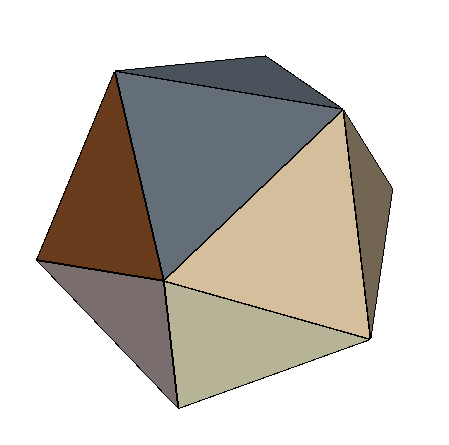
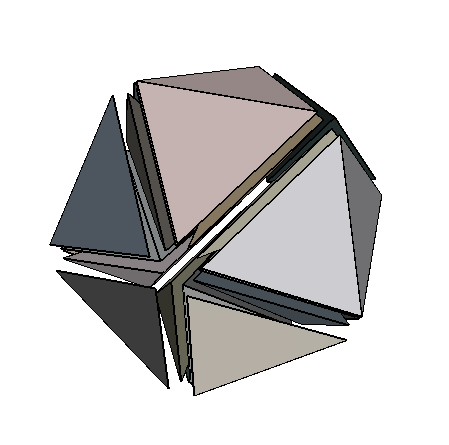
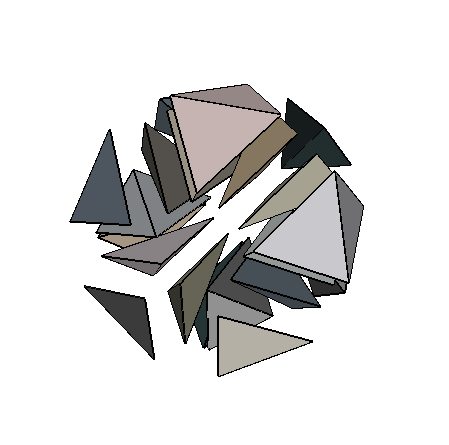
The challenge here is to discover the most economical way of decomposing a regular icosahedron into tetrahedra. A similar fun exercise is to find the decomposition with the largest number of tetrahedra. Here below we summarize a series of hints that you may use to discover the answer! try it! Below you can look at a gallery of pictures showing the dissection with the maximal number of tetrahedra.



An even harder problem is that of the dodecahedron! Below you can see a sequence of pictures and an mpeg movie depicting the minimal decomposition into tetrahedra. How can one find the largest or the minimal tetrahedralizations? This is clearly a complicated question in general. For example, researchers haver tried for many years to understand the minimal decompositions of higher dimensional analogues of a cube, because of its importance in real life practical calculations!! Most recently researchers at the Geometry Center of the University of Minnesota developed general techniques to compute such minimal decompositions. The fundamental insight is that the collection of all tetrahedralizations is in fact a large polyhedron, the so called Universal polytope, that lives in high dimensions. If one could find facet equations for the Universal polytope then you can find the optimal tetrahedralizations.
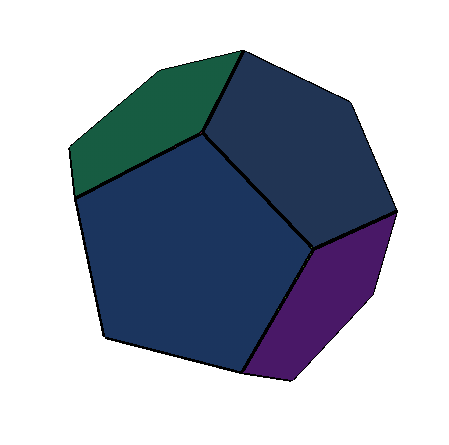
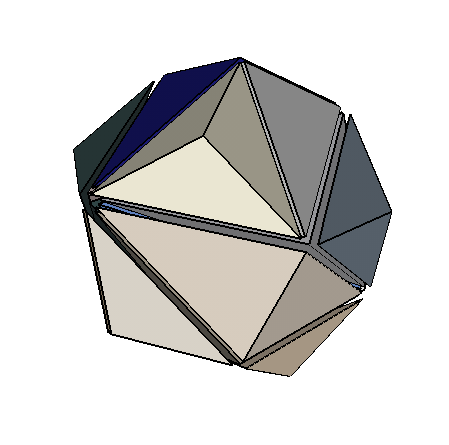

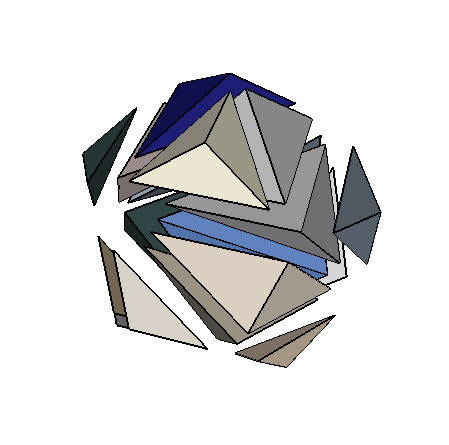
![[More]](ico.gif) minimal tetrahedralization from outside (movie, 2MB)
minimal tetrahedralization from outside (movie, 2MB)